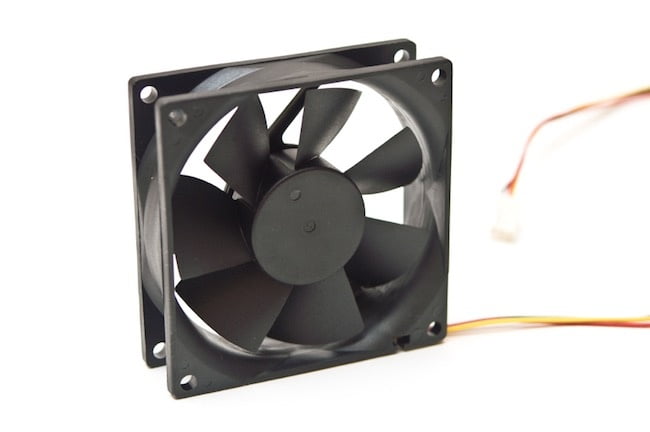Why a Cabinet Cooling Fan Won’t Hold Up in Harsh Environments

Using a cabinet cooling fan is the simplest and most economical way to dissipate heat from your enclosure if the temperature inside the enclosure can be greater than the ambient temperature. It is easy and cheap to add a filter to protect your system from minor dirt and impurities. However, there are stipulations for use of a filtered fan. Your application must require low to moderate heat dissipation and be located in a cool, clean air environment where humidity is not a concern. Harsher environments with high ambient temperature, airborne particles, humidity and dispersed oil in the air are conditions that filtered fans cannot handle.
Simple open loop construction
A filtered fan consists of the filter housing, a fan motor and a propeller. The motor rotates the propeller and creates a pressure differential between the front and back of the fan, causing air to flow. The housing channels the airflow through the filter and into the enclosure. The air displacement capacity of the fan is measured in CFM (cubic feet per minute). Filtered fans have no active closed loop cooling systems that control the temperature inside the enclosure. They use forced convection to drive the hot air out of the enclosure replacing it with the relatively cooler ambient air. For locations with fluctuating ambient temperature capable of allowing higher than normal operating temperature of your electrical equipment, using filtered fans is not an option.
Impediments to flow – a clogged filter
Free airflow is the amount of air the fan can move if it has no flow impedance. If you place a fan on the table with no obstructions to airflow, there is little or no impedance. The mere presence of a filter in the fan housing introduces resistance to the airflow which reduces the amount of air being moved. If the environment has a lot of airborne particles, the filter gets clogged up. This further increases the resistance that impedes the airflow, preventing it from reaching all regions inside the enclosure. The fan slows down and consumes more power. Sometimes, this can also result in burnt fan motors. Using filtered fans in polluted locations ends up increasing maintenance costs due to having to replace clogged filters often.
Humidity
NEMA 3R shrouds for your fans can protect your electrical equipment from precipitation but they do nothing to reduce humidity in air. This can be detrimental to the electrical equipment inside your enclosure. When moisture in the air comes in contact with the electrical equipment, it can cause short-circuiting, corrosion and breakdown in the electrical circuitry.
If you anticipate your enclosure to be located in a harsh environment with a high degree of air pollution, high humidity and high ambient temperature, it is best to consider closed loop cooling solutions for longevity and efficient performance of your electrical equipment. Thermal Edge can help you choose products for your requirements from heat exchangers to enclosure air conditioners. Contact us today for a free quote.

